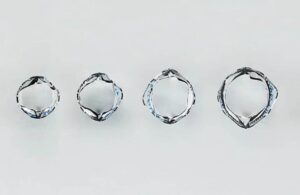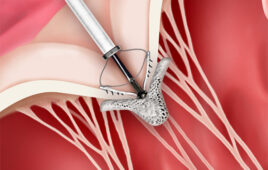
Studies have shown the Autus Valve maintains control of blood flow as it expands. [Image courtesy of Boston Children’s Hospital]
In 2020, the hospital published research on its innovative heart valve design that could allow children to maintain the same prosthetic heart valve until adulthood. This could also benefit adults with heart valve defects. The hospital calls it the Autus Valve.
Children with congenital heart disease who receive fixed-size valves require multiple open-heart surgeries during childhood to replace their valves with larger versions.
Early simulations and animal testing of the Autus Valve demonstrated successes through a range of sizes. They also retained functionality when expanded by a minimally invasive balloon catheter procedure.
This valve fits to an individual child’s body size and the balloon catheter adjustment helps maintain blood flow. Boston Children’s says this valve prevents replacement procedures until the children reach adulthood.
The clinical trials announced this month evaluate the valve’s effectiveness in children ages 2 to 11. Boston Children’s intends to follow an initial study with a larger clinical trial. It hopes to garner FDA approval to make the device commercially available.
About the valve’s design
First implanted in a young patient in late 2021, the valve differs from standard, commercially available prosthetic heart valves. Those valves feature three leaflets operating as flaps to control blood flow. Boston Children’s designed its valve to mimic the bi-leaflet function of a venous valve in leg veins.
This type of venous valve allows for proper closure and one-way blood flow even after leg veins expand in diameter. The team felt this process could also work in the heart. It designed the two leaflets with a polymer used previously as a pediatric pulmonary valve leaflet. After implantation, cardiac catheterization specialists can expand the valve with the balloon catheter. Doctors can also use echocardiogram to assess the valve’s integrity and its control over the flow of blood.
“It’s exciting and incredibly motivating that we’re at the stage where we can actually see the device helping patients,” said the device’s inventor, Dr. Sophie-Charlotte Hofferberth. “If a valve expansion is needed after the device is implanted, we anticipate a child would recover from the procedure within a few hours,”
“There is a huge need for better solutions for children with valve disease. A pulmonary valve that can be adjusted for size could give young patients a bridge through childhood and have a huge impact on their long-term quality of life.”




